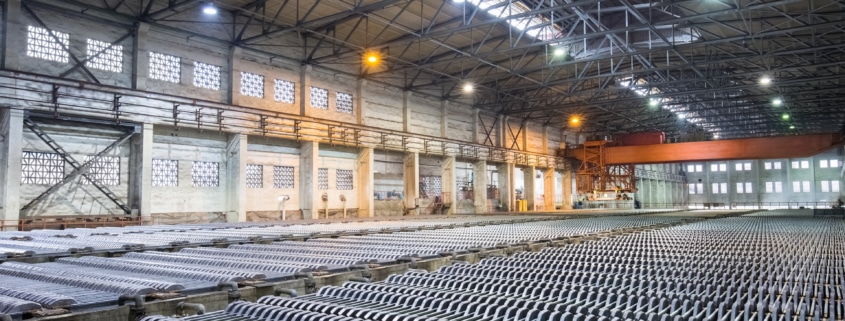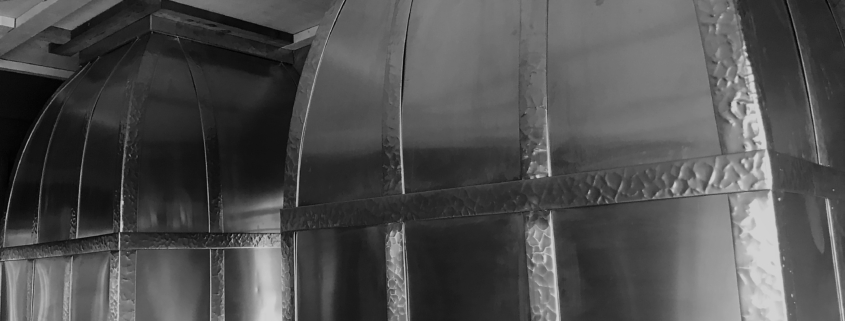Metal wall cladding is growing increasingly more prominent in commercial and residential projects. It is predominantly helpful for protective and aesthetic functions, dependent on the material and the application. Today, there are a plethora of wall cladding materials to choose from to suit every builder or designer’s tastes and preferences.
Cladding, which comes in diverse textures and designs, can bring your exteriors and interiors to life by adding a vivid and sophisticated aesthetic to otherwise more standard buildings. You can apply wall cladding to an intermediary layer of battens or spacers to give interior or external walls a decorative layer,
If you have considered utilizing wall cladding in your upcoming project, this post will cover everything you need to know about it, including its function, benefits, and different types.
The Basics of Wall Cladding
The procedure of cladding involves laying one material on top of another. Cladding is not only employed on exterior walls, but it is also essential in adding an artistic feature to interior design. It is typically non-structural, implying it does not affect the architectural foundation nor support weight. Most importantly, it is intended primarily to be durable, and it may bring advantages such as waterproofing and insulation.
Exterior & Interior Wall Cladding
Exterior Wall Cladding
The technique of coating a structure with another material is referred to as exterior wall cladding. The purpose of exterior wall cladding is to enhance the appearance of a particular wall. However, it also contains certain practicable benefits, making it an excellent and cost-effective solution to transform the look and design of an exterior wall.
Interior Wall Cladding
Interior wall cladding also serves as a protective coating for commercial buildings’ internal walls. Interior wall cladding materials come in numerous designs, styles, and colors to suit your preferences. Aside from its attractive appearance, premium interior wall cladding in certain applications can be resistant to scratches and abrasion, with higher intensity durability.
Types of Wall Cladding
Brick Wall Cladding
The oldest and most common type of wall cladding material is brick. In comparison to alternative building techniques, brick cladding dramatically reduces production expenses, which will help you save money, time, and effort. Brick comes in a wide selection of colors and can be finished to give various aesthetic options.
Zinc Cladding
Zinc is a very unique and useful material to be used as building cladding. Many of us are familiar with the oxidation process that takes place on steel, which forms rust after some time. Zinc has incredible corrosion resistance and is the material of choice for roofing and other external architectural applications due to its longevity and durability.
The beauty of zinc isn’t only in its patinated color, but also because it provides longevity for your building. A properly designed system can last 60 years or more under most climatic conditions and has the ability to heal over time scratches that were once present, making them virtually disappear.
Wooden Cladding
Wooden cladding comes in a panel, shingle, and horizontal board varieties. The solid wood is appealing, warm, and rustic, making it a favorite pick among many homeowners. Aside from that, it is also an excellent natural cladding and insulator that is sustainable and environmentally friendly.
Stone Cladding
Stone cladding is a decorative coating consisting of either simulated or real stone. It is vital in overlaying cement, steel, or concrete walls. Genuine stones such as slate, sandstone, and granite, and compounds that resemble natural stone but are lighter in weight, such as veneer, are also useful in this cladding method.
Vinyl Cladding
Vinyl cladding is a low-cost, simple-to-manage material that fits excellent on multiple kinds of structures. What’s more, it is also easy to incorporate insulation, and can be installed quickly and at a reasonable cost.
Stucco Cladding
In stucco cladding, products such as crushed stone, recycled concrete, gravel, and sand are being employed. Stucco cladding is prominent because of its adaptability, rot protection, durability, and fire resistance. Stucco cladding adds a lot of curb appeal to the interior of your property.
Ceramic Cladding
Ceramic cladding is not easily prone to damage and is highly resistant to adverse weather. It has the ability to survive for quite a long time with little wear and tear. It is also resilient against harmful UV radiation, so sun exposure, rain, or growing pollution levels do not affect the ceramic covering.
Aluminum Cladding
Aluminum claddings are the most durable and have a long life expectancy. Such exterior cladding requires minimal management and is often visible on a storehouse of a building’s walls.
The Advantages of Wall Cladding
There are several advantages to using wall claddings. The following are among the primary benefits of utilizing wall cladding in your ongoing construction project:
- Supply ideal insulation and acoustic for sound absorption
- Increase the mechanical strength of the structure
- Chemical and air pollutants will not be present
- Strengthen resistance to cracking as the temperature goes up
- Serve as a decorative element
- Offer resistance to sunlight and UV damage
- Reduce the amount of water absorption
- Act as thermal insulation
Consult the Metal Experts for Your Next Project
MetalTech Global is the nation’s premiere distributor and fabricator of coil, sheet and finished architectural metals products. Working with our affiliates, we are promoting the use of sustainable metal products in the building.
We envision that home and commercial construction will be committed to using only durable and reusable products. MetalTech Global can help your commitment be successful as durability, reusability, and sustainability is our area of expertise. We work with companies like elZinc America, VMZinc, Lorin Industries, and Hussey Copper to provide the highest quality architectural products in natural metals.
While zinc has been used extensively in Europe for hundreds of years, it is a relatively new building metal in North America, and its potential for robust, beautiful structures is unmatched. As of 2021, MetalTech Global is the largest stocking center of architectural zinc in North America, with the capability of re-processing sheets and coils for customers on demand.
Contact us today for architectural metals, coils, panels, metal fabrication and cutting, folding, and more.



